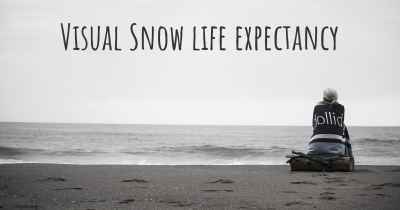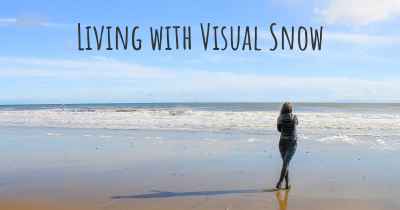What are the latest advances in Visual Snow?
Here you can see the latest advances and discoveries made regarding Visual Snow.

Visual Snow is a rare condition characterized by the presence of tiny flickering dots or static-like patterns in a person's visual field. These visual disturbances can significantly impact an individual's quality of life, causing discomfort and impairing their ability to perform daily tasks. While the exact cause of Visual Snow remains unknown, recent advances in research have shed light on potential underlying mechanisms and treatment options.
Research on Visual Snow
Over the past few years, researchers have made significant progress in understanding Visual Snow and its associated symptoms. One key area of investigation has focused on identifying the neurological basis of the condition. Studies using functional magnetic resonance imaging (fMRI) have revealed abnormal activity in certain brain regions involved in visual processing, suggesting a possible link between Visual Snow and altered neural pathways.
Furthermore, recent research has highlighted the role of hyperexcitability in the visual cortex as a potential cause of Visual Snow. It is believed that increased neuronal activity in this region may lead to the perception of visual disturbances. This finding has opened up new avenues for exploring treatment options that target neural hyperexcitability.
Treatment Approaches
While there is currently no cure for Visual Snow, several treatment approaches have shown promise in managing the condition and alleviating symptoms.
1. Medications: Certain medications, such as lamotrigine and acetazolamide, have been reported to provide relief for some individuals with Visual Snow. These drugs work by modulating neuronal activity and reducing hyperexcitability in the brain. However, their effectiveness varies among patients, and further research is needed to establish their long-term benefits and potential side effects.
2. Transcranial Magnetic Stimulation (TMS): TMS is a non-invasive procedure that uses magnetic fields to stimulate specific areas of the brain. Preliminary studies have shown that repetitive TMS applied to the visual cortex can lead to a reduction in Visual Snow symptoms. However, more extensive research is required to determine the optimal stimulation parameters and long-term effects of this approach.
3. Cognitive Behavioral Therapy (CBT): CBT is a psychological intervention that aims to modify negative thoughts and behaviors associated with a particular condition. While it may not directly target the underlying cause of Visual Snow, CBT can help individuals cope with the distressing symptoms and improve their overall well-being.
4. Lifestyle Modifications: Some individuals with Visual Snow have reported that certain lifestyle changes, such as reducing stress levels, getting regular exercise, and maintaining a healthy sleep schedule, have helped alleviate their symptoms. While these modifications may not work for everyone, they can contribute to overall symptom management and well-being.
Future Directions
As our understanding of Visual Snow continues to evolve, ongoing research aims to explore novel treatment options and further elucidate the underlying mechanisms of the condition. Advances in neuroimaging techniques, such as high-resolution fMRI and diffusion tensor imaging, hold promise for identifying specific brain abnormalities associated with Visual Snow.
Additionally, collaborations between researchers, clinicians, and patient advocacy groups are crucial for advancing Visual Snow research. These partnerships can facilitate the development of standardized diagnostic criteria, promote awareness, and support the recruitment of larger patient cohorts for clinical trials.
In conclusion, while Visual Snow remains a complex and poorly understood condition, recent advances in research have provided valuable insights into its underlying mechanisms and potential treatment options. Ongoing studies and collaborations offer hope for improved diagnosis, management, and ultimately, a better quality of life for individuals living with Visual Snow.
Posted May 28, 2017 by Leonardo 2000
Posted Jun 4, 2017 by Jayden 1410
Requires a lot more research.
Posted Oct 2, 2017 by Rrakusin 2000
Posted Jan 12, 2018 by Max 3550
Posted May 28, 2019 by Labnjab 2500
Posted Sep 3, 2019 by Yasmine Elsen 2500
Posted Sep 4, 2019 by Denali 2550
Posted Sep 14, 2021 by Kay 2670
A little over three years ago, Monash University Department of Neuroscience researchers Associate Professor Joanne Fielding and Professor Owen White were given a $140,000 to fund research into a neurological condition that was at the time little known and under-researched.
People with Visual Snow Syndrome see the world through a constant overlay of flickering dots passing over their entire field of vision. This persists whether their eyes are open or closed. The incurable condition is not due to eye problems – it’s caused by an unknown brain malfunction.
The donation from the US-based non-profit Visual Snow Initiative (VSI) allowed researchers in the Ocular Motor Research group, including Dr Meaghan Clough and PhD students Emma Solly and Paige Foletta, to conduct a suite of studies using simple eye movement tasks.
Associate Professor Fielding said the team had been busy, notwithstanding COVID-19. Last year, they published three papers on VSS. Two of the studies extended and supported the findings made in a breakthrough 2020 paper published in Neurology that found that people with VSS moved their eyes much faster than healthy controls towards a suddenly-appearing visual stimulus, and when asked to look away were more likely to erroneously move their eyes towards the stimulus.
“The 2020 paper provided the first evidence of objective and quantifiable behavioural changes in patients with Visual Snow Syndrome,” Associate Professor Fielding said. “It provided concrete evidence that VSS is driven by neurological dysfunction,” she said. “For a disorder that was previously considered psychogenic, this evidence is crucial validation for patients that there’s really something wrong.
Posted Mar 14, 2022 by Khaled 3630








